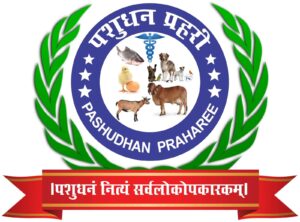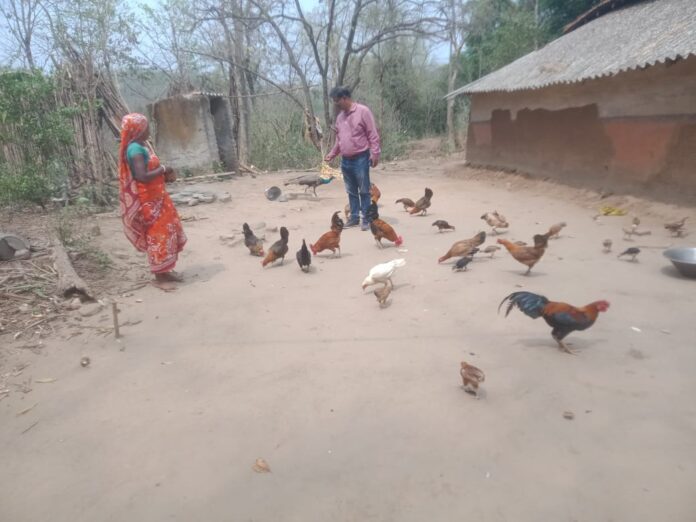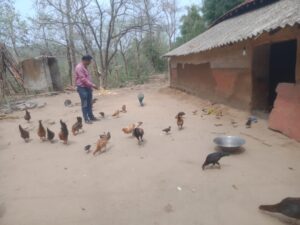Goat, Poultry & Pig Rearing – A Pathway to Women Empowerment & Sustainable Livelihoods in Tribal Jharkhand
Bahragora, a remote forested region in the tribal heartland of Jharkhand, sits at a confluence of cultures and ecosystems, nestled close to the borders of Odisha and West Bengal. This unique geography not only enriches biodiversity but also sustains the age-old livelihoods of tribal communities. Among these, livestock rearing—especially native poultry, Black Bengal goats, and non-descript pigs—plays a vital role in the socio-economic fabric of these communities.
The Bahragora Block of East Singhbhum is a remote tribal-dominated region of Jharkhand, holds immense potential for rural livelihood development through traditional livestock farming. The tribal communities here depend on goat rearing, desi (native) poultry farming, and pig rearing for sustenance and income generation. Women, in particular, play a pivotal role in managing these livestock systems, contributing significantly to household income and food security.
Livestock as a Pillar of Rural Livelihood
- Goat Rearing (Black Bengal Goats)
- Low Input, High Returns: Black Bengal goats, native to this region, require minimal investment in terms of feed and housing, making them an ideal choice for small-scale farmers.
- High Market Demand: Known for their high-quality meat and skin, these goats fetch premium prices in the local and regional markets.
- Economic Resilience: Regular kidding and a short reproduction cycle ensure a steady income for farmers, empowering women in financial decision-making.
- Indigenous Poultry Farming (Desi Chickens)
- Scavenging-Based Farming: Desi poultry birds are resilient and thrive on kitchen waste, insects, and grains, requiring little external input.
- Nutritional Security: Eggs and meat from indigenous breeds provide essential protein to tribal families, combating malnutrition.
- High Demand for Free-Range Chicken: Consumers prefer desi poultry due to its superior taste and nutritional value, ensuring good market prices.
- Pig Rearing (Non-Descript Pigs)
- Adaptability to Local Conditions: Pigs raised by tribal communities are well-adapted to foraging and require minimal care.
- High Reproductive Rate: A single sow can produce multiple litters annually, ensuring a continuous source of income.
- Meat Consumption and Market Demand: Pork is widely consumed in tribal and non-tribal communities, offering assured sales and profitability.
Indigenous Technical Knowledge (ITK): The Tribal Way of Rearing Livestock
Tribal communities in Bahragora and surrounding areas have developed time-tested Indigenous Technical Knowledge (ITK) systems for managing their livestock. These include:
- Free-Range Rearing of Native Poultry: Tribal households rear hardy native chickens under backyard or free-range systems. Birds forage for feed, minimizing input costs. Seasonal shelters are made from local bamboo and leaves.
- Black Bengal Goat Management: These goats are chosen for their high reproductive rates and adaptability. Goats are tethered in forest patches and grazed on wild shrubs and herbs, often with zero-input feeding systems.
- Pig Rearing in Forest-Fringe Villages: Non-descript pigs are traditionally reared in wallow pits or open backyard enclosures, often fed with forest produce, kitchen waste, and rice husk. Pig dung is used as organic manure, closing the sustainability loop.
Ethnoveterinary Practices: The Tribal Pharmacopeia
The communities possess rich ethnoveterinary knowledge passed down generations. Local herbs and traditional remedies are used for disease prevention and health maintenance:
- Neem, Haldi (Turmeric), and Garlic concoctions are used for deworming and wound dressing.
- Ash and burnt husk are used to dust birds for ectoparasite control.
- Herbal decoctions from tulsi, karanja, and bahera leaves are given orally to sick animals to boost immunity.
- Smoked chillies and forest resins are used in sheds to repel insects and improve animal comfort.
Transforming Tribal Lives
Livestock not only serves as a livelihood but also a cultural and economic safety net. By strengthening traditional knowledge systems with modern veterinary interventions—such as vaccinations, improved breeding, and health management—the lives of tribal farmers are being steadily transformed:
- Income Security: Sale of native poultry, goat kids, and pigs provides regular income and helps in poverty alleviation.
- Nutrition & Food Security: Animal products like eggs, meat, and milk contribute to household nutrition.
- Women Empowerment: Women play a crucial role in daily livestock care, and their involvement fosters financial independence.
The Way Forward
To truly empower tribal livestock farmers, it is essential to:
- Document and validate local ITKs.
- Train paravets and local youth in combining ITK with scientific practices.
- Promote community-based livestock extension and health services.
- Facilitate market linkages for livestock products under local branding like “Tribal Raised Organic Meat.”
Value Chain Development for Sustainable Income
To enhance profitability and improve the livelihood of tribal farmers, the following value chain interventions can be implemented:
- Aggregation and Market Linkages
- Formation of Farmer Producer Organizations (FPOs) or Self-Help Groups (SHGs) for collective marketing.
- Establishing direct linkages with wholesale meat markets, restaurants, and urban consumers.
- Value Addition and Processing
- Goat Meat: Processing into value-added products such as packaged meat cuts, goat meat pickles, or ready-to-cook items.
- Poultry Products: Establishing small-scale hatcheries to supply vaccinated chicks to local farmers, ensuring disease resistance.
- Pig Products: Setting up pork processing units for smoked or dried pork, enhancing shelf life and marketability.
- Veterinary and Extension Support
- Regular deworming, vaccination, and disease management programs to ensure livestock health and productivity.
- Training programs on scientific breeding, feed management, and healthcare for tribal women.
- Financial and Policy Support
- Linking women farmers with government schemes like Rashtriya Krishi Vikas Yojana (RKVY), National Livestock Mission (NLM), and NABARD rural financing for financial assistance.
- Encouraging bank loans and microfinance for livestock infrastructure development.
By strengthening traditional livestock rearing through modern interventions, tribal women in Bahragora can achieve economic empowerment, food security, and a better standard of living. Developing a robust value chain for goats, desi poultry, and pigs will ensure fair pricing, reduced exploitation by middlemen, and sustainable rural development. These initiatives will not only transform the tribal economy but also contribute to women’s empowerment and rural prosperity in Jharkhand.
In conclusion, the integration of indigenous knowledge and ethnoveterinary practices in livestock rearing is not only preserving cultural heritage but also paving the way for sustainable rural development in tribal belts like Bahragora. With the right policy support and field-level interventions, this grassroots model can serve as a beacon for tribal transformation in India.
Dr. Rajesh Kumar Singh ,TVO, BAHRAGORA,
E.SINGHBHUM (JAMSHEDPUR), JHARKHAND





